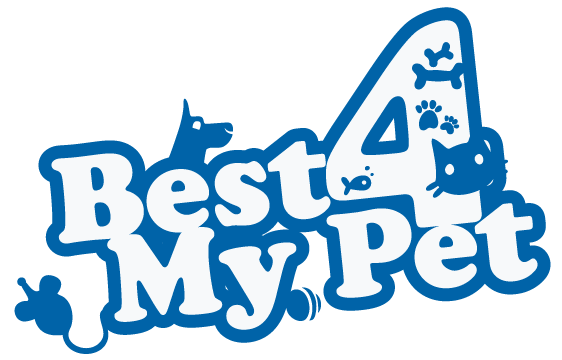The post Decoding Dog Food Lingo by Elizabeth Anderson Lopez appeared initially on Dogster . Copying over whole short articles infringes on copyright laws. You might not understand it, however all of these short articles were designated, paid and contracted for, so they aren’t thought about public domain. We value that you like the short article and would enjoy it if you continued sharing simply the very first paragraph of a post, then connecting out to the rest of the piece on Dogster.com.
Certain words sound appealing when it pertains to canine nutrition, however a few of them wear’’ t provide precisely what you “might believe. “ Artisanal ” may evoke a hipster Afghan Hound with a guy bun, and ““ premium ” might have you envisioning an elegant chef preparing a meal for a foufy French Bulldog couple. Do you understand the real significance of these terms when it comes to the canine food world?
““ A great deal of these claims do not ensure a minimum basic quality since one doesn’’ t exist for a lot of these terms, ” states Melanie Glass, DVM, with the ASPCA Animal Hospita l in New York, New York. “ The confusion and trouble of picking healthy food for ourselves and our family pets is intensified by difficult-to-understand labels and skilled marketing tools that make enticing claims not always based upon science. ”
. Typical terms described 
Confused on pet food terminology? Let us describe! Photography © Quirex|Getty Images.
.
According to Debbie Phillips-Donaldson, editor-in-chief of family pet market publication Petfood Industry and the occasion Petfood Forum , some terms are thought about marketing buzzwords like artisanal and premium, while others are “ not regularly or totally specified( sustainable, in your area sourced, openness). None are controlled. ”
.
This suggests pet dog fans”need to research these terms and do some research study on the items. Connect and ask the business more about the item to see if your understanding of the term is the very same as theirs.
. Artisanal.
This is a popular term in both the pet and human world. We ’ ll utilize the Merriam-Webster dictionary ’ s meaning. Artisanal methods “ produced in minimal amounts by a craftsmen through making use of conventional approaches– artisanal bread, cheese or white wine. : developing an item in restricted amounts by conventional techniques. ”
.
If a business states the food is artisanal, have a look at the site or email the business to discover precisely what that suggests in regard to its item.
. Freeze-dried.
Dr. Glass explains freeze-dried as “ a particular cooking that eliminates wetness material of food and can make it extremely rack steady. This kind of food frequently seems more pricey without any clinical proof that it offers any extra dietary advantages. ”
.
“ When used to animal items, this generally implies thatthe items are ‘ raw ’ and were not prepared to a safe temperature level prior to being freeze-dried, ” states Cailin Heinze, VMD, DACVN, a board-certified veterinary nutritional expert at the Cummings School of Veterinary Medicine at Tufts University in North Grafton, Massachusetts. “ These items are hence at high danger of bacterial contamination with unsafe pathogens. “Some freeze-dried meats are prepared initially, however you can ’ t inform by taking a look at them– you would need to ask the maker about each item.
’. Premium.
Once once again, we need to head to the Merriam-Webster dictionary for a reliable meaning: “ Of, associating with, or being high quality, costly or specialized food usually needing skilled and sophisticated preparation. ”
.
Usually premium food is a little bit greater priced, however this is not a regulated term.Once again, if a business states the food is premium, have a look at the site or email the business to learn precisely what that implies.
“ Unfortunately, customers have the understanding that grain-free foods are healthier than grain-based foods, ” states Trumbull, Connecticut-based Ryan Yamka, PhD, board-certified in buddy animal nutrition by the American College of Animal Sciences and a fellow with the American College of Nutrition . “ Most will … state it ’ s since they are lower in carbs, too; nevertheless, this is merely not real. The majority of grain-based items will use entire grains. Many grain-free foods will utilize refined or cleansed starches like tapioca starch, potato starch and pea starch( in some cases all 3 in the leading 7 active ingredients). ”
.
Dr. Glass includes even more insight: “ There is no clinical proof that shows grain infamily pet food is damaging, ” she states. “ Whole grain can offer an outstanding source of quickly absorbable protein,” vitamins, “minerals and other nutrients. Alternatives can in fact have less nutrients and be harder for canines to absorb. ” Dr. Glass includes that the majority of pets do not need a very little carb diet plan to be healthy.
. In your area sourced.
Dr. Glass mentions trouble in specifying this term. “How far is too far to be thought about regional? Is it in your area sourced if all of the animals “were raised near the maker or just some? Is it regional if the animals were raised far however the producer remains in your town? ” she concerns. “ Again, this does not always suggest any ecological” advantage and definitely does not clarify any dietary quality to a canine food. ”
.
Dr. Heinze concurs. “ You can have bad or excellent quality components sourced in your area or distantly– e.g., you might get outstanding lamb from New Zealand however bad quality chicken from your next-door neighbor ’ s yard. ”
. Sustainable.
“ Sustainability in its purest kind is how a business”producesfavorable effect for the“environments and neighborhoods where they operate, ” according to Dr. Yamka. “ When taking a look at business that declare to be sustainable,” you must examine how “they buy active ingredients( i.e., part of the marine sustainability union), how they produce (i.e., do they utilize solar power) to their product packaging( i.e., do they recycle or partner with individuals who can). Many business focusing on sustainability practices are part of the Pet Sustainability Coalition or will be a Certified B Corporation. ”
.
See if a business belongs to the PSC or a Certified B corporation at these sites: petsustainability.org and bcorporation.net .
Transparency.
“ Inits purest kind, openness must consist of active ingredient sourcing, where your item is made, does it consist of processing help or concealed components and how the food in fact benefits the animal, ” Dr. Yamka states. “ If a business declares to be transparent, see if it fulfills these elements. ”
.”
Again, regulative firms do not specify openness for pet food claims, however Dr. Heinze does. ““ To a veterinary nutritional expert, it suggests being ready and able to address our concerns about nutrient levels, calories, active ingredient sourcing, where the food is made and by whom, who developed the dishes and their qualifications, and so on,” ” she includes. “ In my 10 years of calling pet food business, I can inform you this is frequently the exception instead of the guideline!””
. What do youfeed?
Pet owners wish to feed their pet dogs the very best food they can manage. A few of these marketing buzzwords motivate pet owners to pay greater rates for lower quality.
““ I have customers all the time apologetically inform me that they are feeding different diet plans that aren’’ t thought about to be as ‘ stylish ’ or ‘ high quality ’ as a few of the more greatly hyped/marketed/trendy diet plans,” ” Dr. Heinze “states. “ Meanwhile, a lot of these diet plans are much better in the actually essential things than the actually fashionable diet plans they feel bad about not feeding! I’’ ve likewise had customers decline to feed restorative diet plans that might have a significant impact on their pet’’ s health due to the fact that the diet plan doesn ’ t fit their image of a ‘‘ top quality ’ diet plan, which is typically formed by this type of terms and marketing.” ” When it pertains to choosing the best food for your canine, concentrate on the real active ingredients rather of radiant terms.
When in doubt, research study the item consisting of connecting to the maker, ask your vet, or think about Dr. Heinze’’ s method. “ My general rule for picking family pet foods (and for the a lot of part for my own diet plan also) is to prevent things that are stylish in favor of attempted and real. I would rather that my family pets not be the guinea pigs for some vibrant marketing term or brand-new active ingredient or procedure that might not have actually been completely checked. If it sounds too great to be real, it most likely is.””
. Everything About AAFCO 
What about AAFCO? Photography ©© Fly_dragonfly|Getty Images.
According to the FDA’’ s site, the FDA guarantees that the active ingredients utilized in family pet food are safe and have a proper function in the family pet food. Similarly crucial however lower understood is the Association of American Feed Control Officials (AAFCO) .
““ AAFCO requirements are the agreed-upon dietary requirements for a pet’’ s health made through years of medical trials by veterinary nutritional experts. This indicates that the foods fulfill particular requirements that are accepted to properly offer nutrition for your pet,” ” states Melanie Glass, DVM, who practices at the ASPCA Animal Hospital in New York.
““ If a family pet food does not ‘state they are ‘ AAFCO checked ’ or at a minimum ‘ created to fulfill AAFCO requirements,’ ’ I suggest owners remain clear of those foods, no matter what claims they might promote,” ” Dr. Glass states. ““ Nutrition is an extremely difficult field, and developing diet plans effectively is challenging so as a vet, the most crucial element of diet plan for me is that a business wishes to guarantee a science-based dietary profile that was produced by independent specialists in the field.””
.
Visit talkspetfood.aafco.org for more information on AAFCO and how they specify ““ natural, ” “ natural ” and “ human grade.”
.
Thumbnail: Photography ©© Holly Hildreth Photography.
.About the author.
Elizabeth Anderson Lopez is an acclaimed author based in Lake Forest, California. She and her hubby have lots of animals, consisting of 2 English Bull Terrier saves called Dexter and Maybelene. You can call her at fromconcepttocontent.com .
Editor’’ s note: This short article appeared in Dogster publication. Have you seen the brand-new Dogster print publication in shops? Or in the waiting space of your veterinarian’’ s workplace? Subscribe now to get Dogster publication provided directly to you!
. Learn more about pet food on Dogster.com: UsingCoconut Oil for a Dog ’ s Itchy Skin Can Dogs Eat Carrots? If So, Are Carrots Good for Dogs? Dog Digestive System Basics– How Long Does it Take for a Dog to Digest Food? .
The post Decoding Dog Food Lingo by Elizabeth Anderson Lopez appeared initially on Dogster . Copying over whole short articles infringes on copyright laws. You might not know it, however all of these posts were appointed, paid and contracted for, so they aren’t thought about public domain. We value that you like the short article and would like it if you continued sharing simply the very first paragraph of a short article, then connecting out to the rest of the piece on Dogster.com.
.
Read more: dogster.com






Recent Comments